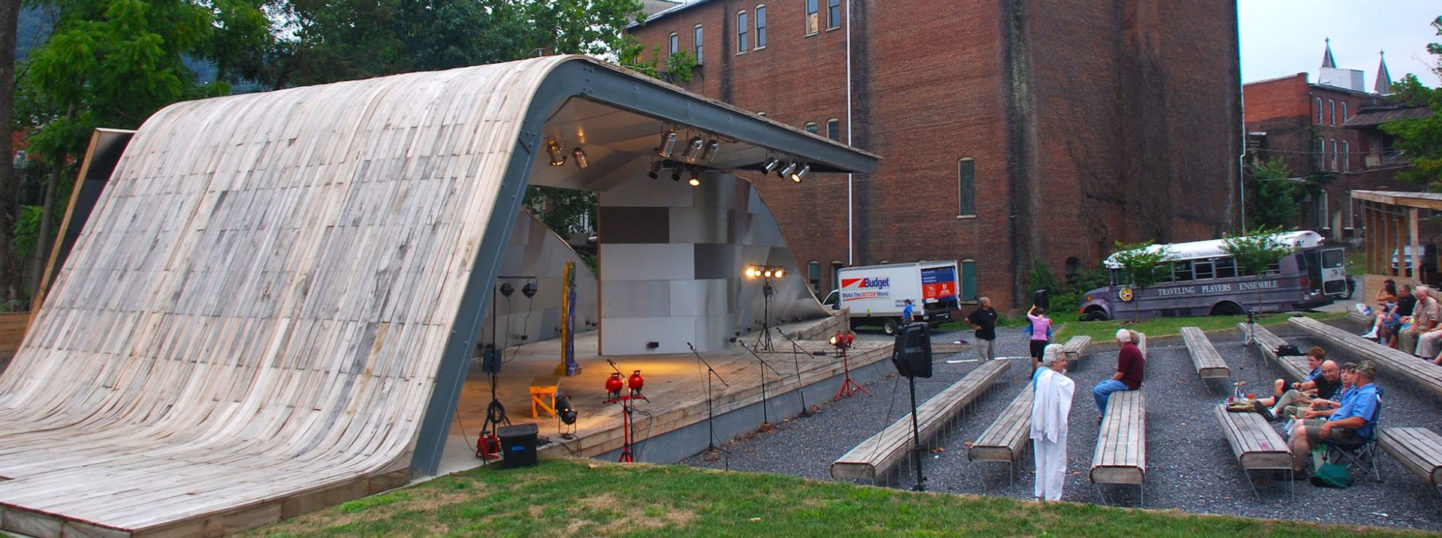While America’s major metropolitan cities have taken center stage in cultural debates, the nation’s smaller cities and towns have a culture, vibrancy and uniqueness all their own. Even as big urban centers are introducing high-tech ideas for governing, there is much creativity and dynamic problem-solving going on in communities with populations fewer than 50,000 residents.
In NLC’s new report Snapshot of Small City Success, we explore the fiscal and economic health and leadership priorities of these small cities. The report highlights conditions and programs from small cities alone — but its ideas and lessons have universal applicability to the full range of municipalities. One of these stories, Clifton Forge, Virginia, speaks to the power of the arts in redeveloping small downtowns:
The town of Clifton Forge, Virginia (pop. 3,884), is in the western part of the state near West Virginia. The rural Alleghany Highlands features some of the most beautiful forestlands interspersed with lakes and state parks. Thanks to a collaboration among a number of partners, two magnificent performance venues have been added as a community and economic development catalyst for the downtown and the region.
From its construction in 1905 until a temporary closing in 1987, the Mason Hall and Opera House was the oldest continuously operated theater in the Commonwealth of Virginia. Eventually it came into the possession of the town of Clifton Forge in 2003. The task of restoring the facility was given to the Masonic Theatre Preservation Fund in 2009. The grand reopening was July 2016.
The three-story beaux-arts brick building with its plastered façade is an architectural treasure. In its heyday, the performance hall hosted such legends as political orator William Jennings Bryan and entertainers Roy Rogers, Gene Autry, Tex Ritter, Burl Ives, the Drifters and the world-famous Count Basie Orchestra.
The renovation has rehabilitated all four floors of the theater, including the third-floor ballroom, the warming kitchen and studios, the balcony level with offices and conference room, the auditorium with stage and lobby, and the lower-level dressing rooms, concessions and underground lounge that looks out onto Smith Creek.
An earlier project, completed in June 2012, is the Masonic Amphitheatre and Park. It is the result of contributions from 16 architecture students who were part of a design/build LAB team from Virginia Tech under the direction of award-winning architects Keith and Marie Zawistowski. The work to transform a lot occupied by a tire warehouse was completed in six weeks with support from an army of volunteers, local contractors and community foundations.
A significant part of the project’s success was the series of agreements to relocate the Wholesale Tire Company (WTC), thus freeing up the existing space for the amphitheater. The Alleghany Highlands Economic Development Corp. organized the transactions to relocate WTC, purchase a new building for WTC’s use, and transfer the original warehouse to the theater foundation.
As a community asset, the performance programming runs the gamut from children focused library programs to music and stage plays to weekend flea markets. An important component of the programming is affordability. Some events are free, and those that aren’t cost $5 or $10. The most expensive ticket to date has been for folk duo Robin and Linda Williams, which ran $15.
To rehabilitate this historic theater, a total of $6.5 million was raised from a combination of historic and new markets tax credits, grants and private donations. For the new amphitheater, the Alleghany Foundation contributed $150,000, which became the entire budget for the project.
Today, the amphitheater offers programming for all ages, including independent films, movie marathons, concerts, variety shows, dance, musicals and local performing groups. It also provides space for arts groups, civic organizations, churches and clubs.
Though its historic preservation success is outstanding, Clifton Forge is not alone. Read more about strategies for small cities in Snapshot of Small City Success.
About the author: Jim Brooks is NLC’s Director for City Solutions. He specializes in local practice areas related to housing, neighborhoods, infrastructure, and community development and engagement. Follow Jim on Twitter @JamesABrooks.


